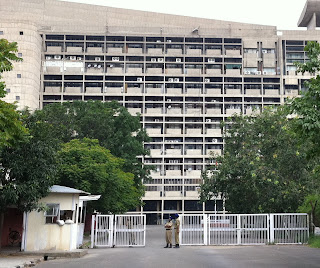by Yoi
During my trip to India I have done a research about Partition of India, India was colonized
by Britain during early 1900, and at that time Britain uses laws and power to oppress Indian
people. And then there was a man named Mohandas Karamchand Gandhi which had great
influence to the demanding independence for India, he formed a group of Indian to fight with British
til 1945 which there was an election and the British governors had a policy to give independence to
India, but they were afraid that India would take a revenge of them because they had taken
advantages on many occasion on Indian people. In one major occasion where The British had
taken advantage on India was when the British oppress the Indian by salt taxation and Indian
people where not able to pay for their on salt. This is when Gandhi play a major roll by a march led
by Gandhi himself, which brings the world to attention when Gandhi was imprisoned- this was
marked as the beginning of the end of the British rule.
After a few days India declare independence the British break India into two parts so that India
wouldn't be to powerful for a nation. The country was split into two parts by the difference in
religion. Indian was a nation with the belief of Hinduism and Pakistan country are people who
believe in Islamic values. The partition had left both India and Pakistan devastated because the
partition had left many lives rapped and robbed through riots which occur between the
disagreement of two religion. In june 2011, there are about 15 million refugees which had come
across the border. This people where mixed religion of hindu and Muslim. The division of Punjab
and Bengal had cause a castratophic riots and claims many lives of Hindus, Muslims, and Sikhs,
which also causes 15 million people in refugee. Kashmir is also part of India, but it is a liberal state
because King Hari Singha Dogra chose to be a liberal state because he is a Hindus but most of the
population in Kashmir are Islamic. The King chose not to be with anybody and signed a cease
peace contract with pakistan so that traveling, trades, and communication are still valid, while
peace between India is also agreed between the two state.
This partition in India had cause many wounds for India as a whole, including Kashmir and
Pakistan. This partition and violence against each other had causes castratophic economic
depression between the country which in actual fact the splitted country should be one and this
simulation of boundaries and the differences between religion which is also a simulation of belief
had causes many innocent lives to die, and many people in refugee. These partition causes many
important lost of their most dynamic, influential leader like Gandhi, Jinnah, and allama Iqbal. The
partition haven't just affected the country which have splitted themselves, but it had also strongly
affected the whole world because if the conflict haven't stop. I personally feel that this conflict may
cause nuclear war to be erupted because both countries had been collecting nuclear weapons.


 Day 1 of our 6 day stay in the town of Chiktan, located in Kargil, began with a mud brick workshop organized by local masons in Chiktan, Kacho (which means 'the king' as he is the descendant of the local royal family), INTACH (the country's largest historic preservation organization) and the Ford Foundation. Each student produced several bricks and left them to dry for 2-3 days in the arid desert sun--not without first signing their masterpieces of course.
Day 1 of our 6 day stay in the town of Chiktan, located in Kargil, began with a mud brick workshop organized by local masons in Chiktan, Kacho (which means 'the king' as he is the descendant of the local royal family), INTACH (the country's largest historic preservation organization) and the Ford Foundation. Each student produced several bricks and left them to dry for 2-3 days in the arid desert sun--not without first signing their masterpieces of course.







































